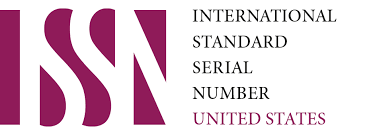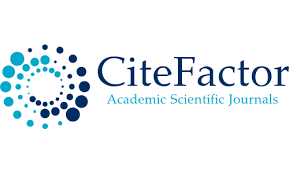Precise Classification of Brain Magnetic Resonance Imaging (MRIs) using COOT optimization
Keywords:
Magnetic Resonance Image, Haar Wavelet Transform, COOTAbstract
This research demonstrated a hybrid approach that combined machine learning algorithms with expert medical knowledge to achieve precise classification of brain MRIs. By harnessing the capabilities of artificial intelligence, these computer-aided methods have the potential to assist healthcare professionals in making well-informed decisions, leading to better patient outcomes. One of the primary advantages of computer-aided diagnosis is its ability to rapidly and efficiently analyze large volumes of medical data. This technology can process numerous MRI scans in a fraction of the time it would take for a human expert to review them individually. This not only saves valuable time but also minimizes the risk of human error or oversight. Furthermore, computer-aided diagnosis systems can detect subtle patterns or abnormalities that might elude even the most experienced radiologists. By analyzing thousands of MRI images and comparing them with established patterns associated with different diseases, these systems can identify potential indicators that might be missed by human observers alone. This heightened accuracy can significantly enhance early detection rates and facilitate timely intervention, ultimately saving lives. The proposed classification system utilized GLCM to extract a comprehensive set of features that capture the spatial relationships between pixels in an image. These features effectively represent significant patterns and structures in the image, thereby facilitating accurate classification. Additionally, the approach incorporated COOT optimization, an optimization technique, to enhance the feature extraction process beyond mere feature selection. By leveraging a cooperative and coordinated framework involving multiple agents, the variables were fine-tuned, leading to improved quality in the extracted features. Consequently, this approach achieved superior feature extraction results, yielding better and more precise features for a given image. Subsequently, CNNs were employed for image classification by training a deep neural network on a labeled dataset and optimizing its parameters. Leveraging the learned patterns and features from the training data, the trained model exhibited the ability to classify new images, resulting in enhanced accuracy for MRI classification
References
Aparna, Vyas., Soohwan, Yu., Joonki, Paik. (2018). Wavelets and Wavelet Transform. doi: 10.1007/978-981-10-7272-7_3.
Vladislav, Skorpil., Jiri, Stastny. (2003). Wavelet transform for image analysis. doi: 10.1109/SIBCON.2003.1335720.
Viresh, Ratnakar. (2001). Wavelet transform coding technique.
Shuang, Zhang., Jinru, Wu., Enze, Shi., Sigang, Yu., Yongfeng, Gao., Lihong, Li., Marc, J., Pomeroy., Zhengrong, Jerome, Liang. (2023). MM-GLCM-CNN: A multi-scale and multi-level based GLCM-CNN for polyp classification.. Computerized Medical Imaging and Graphics, doi: 10.1016/j.compmedimag.2023.102257 .
pallavi, Malavath., Nagaraju, Devarakonda. (2022). Coot optimization based Enhanced Global Pyramid Network for 3D hand pose estimation. doi: 10.1088/2632-2153/ac9fa5.
Hu, Hui., Kang, Wenxiong., Deng, Feiqi. (2017). CNN model, CNN training method and vein identification method based on CNN.
Osman, Özkaraca., Okan, İhsan, Bağrıaçık., Hüseyin, Gürüler., Faheem, Khan., Jamil, Hussain., Jawad, Khan., Umm-e, Laila. (2023). Multiple Brain Tumor Classification with Dense CNN Architecture Using Brain MRI Images. Reproductive and developmental Biology, doi: 10.3390/life13020349 .
Muhammad, Hameed, Siddiqi., Mohammad, Azad., Yousef, Alhwaiti. (2022). An Enhanced Machine Learning Approach for Brain MRI Classification. Diagnostics, doi: 10.3390/diagnostics12112791.
Deepak, V., K.., S., R. (2022). Classification of brain tumours in MRI images using convolutional neural network through Cat Swarm Optimization. Expert Systems, doi: 10.1111/exsy.13021.
C., Narmatha., Sarah, Mustafa, Eljack., Afaf, Abdul, Rahman, Mohammed, Tuka., S., Manimurugan., Mohammed, Mustafa. (2020). A hybrid fuzzy brain-storm optimization algorithm for the classification of brain tumor MRI images. Journal of Ambient Intelligence and Humanized Computing, doi: 10.1007/S12652-020-02470-5.
P., Kanmani., P., Marikkannu. (2018). MRI Brain Images Classification: A Multi-Level Threshold Based Region Optimization Technique. Journal of Medical Systems, doi: 10.1007/S10916-018-0915-8.
Katran, L. F. (2019). Hybrid method for the detection of brain tumor image usingimproving K-Mean and hybrid multilevel image fusion. http://mail.jardcs.org/abstract.php?id=94.
Indrarini, Dyah, Irawati., Sugondo, Hadiyoso., Yuli, Sun, Hariyani. (2020). Multi-wavelet level comparison on compressive sensing for MRI image reconstruction. Bulletin of Electrical Engineering and Informatics, doi: 10.11591/EEI.V9I4.2347.
Alaa, Tom., Jihad, S., Daba. (2023). Revisited Otsu Algorithm for Skin Cancer Segmentation. WSEAS transactions on information science and applications, doi: 10.37394/23209.2023.20.7.
Adeyinka, Tella. (2022). Improved Otsu Algorithm for Segmentation of Malaria Parasite Images. doi: 10.1002/9781119819165.ch10.
Afreen, Shaikh., Sharmila, Botcha., M., Hari, Krishna. (2022). Otsu based Differential Evolution Method for Image Segmentation. arXiv.org, doi: 10.48550/arXiv.2210.10005.
Gang, Liu., ZhiFeng, Zhang., Xiao, Cui., Jinhui, Kuang., J., Cai., Xiaohui, Ji. (2022). Chromosome Image Segmentation Based on OTSU and Region Growing Algorithm. doi: 10.1109/PRAI55851.2022.9904165.
Edi, Faisal., Agung, Nugroho., Ruri, Suko, Basuki., Suharnawi, Suharnawi. (2022). GLCM Based Locally Feature Extraction On Natural Image. JAIS (Journal of Applied Intelligent System), doi: 10.33633/jais.v7i2.6569.
Aya, Alsalihi., Hadeel, K., Aljobouri., Enam, K, Altameemi. (2022). GLCM and CNN Deep Learning Model for Improved MRI Breast Tumors Detection. International Journal of Online Engineering (ijoe), doi: 10.3991/ijoe.v18i12.31897.
Mahmoud, H., El-Bahay., Mohammed, Elsayed, Lotfy., Mohamed, Abd, Elhameed. (2023). Effective participation of wind turbines in frequency control of a two-area power system using coot optimization. Protection and Control of Modern Power Systems, doi: 10.1186/s41601-023-00289-8.
Archita, Goyal., D., K., Srivastava. (2023). Optimization of helical soil nailing behaviors by response surface methodology and hybrid Coot optimization. International Journal for Numerical and Analytical Methods in Geomechanics, doi: 10.1002/nag.3533.
Sher, Shermin, Azmiri, Khan., A., ProvÃ., Uzzal, Kumar, Acharjee. (2023). MRI-based Brain Tumor Image Classification Using CNN. Asian Journal of Research in Computer Science, doi: 10.9734/ajrcos/2023/v15i1310.
Jhan, Yahya, Rbat., Hadeel, K., Aljobouri., Ali, M., Hasan. (2022). MRI brain tumor classification using robust Convolutional Neural Network CNN approach. doi: 10.1109/IICCIT55816.2022.10009913.
Downloads
Published
Issue
Section
License

This work is licensed under a Creative Commons Attribution-NonCommercial 4.0 International License.
User Rights
Under the Creative Commons Attribution-NonCommercial 4.0 International (CC-BY-NC), the author (s) and users are free to share (copy, distribute and transmit the contribution).
Rights of Authors
Authors retain the following rights:
1. Copyright and other proprietary rights relating to the article, such as patent rights,
2. the right to use the substance of the article in future works, including lectures and books,
3. the right to reproduce the article for own purposes, provided the copies are not offered for sale,
4. the right to self-archive the article.












